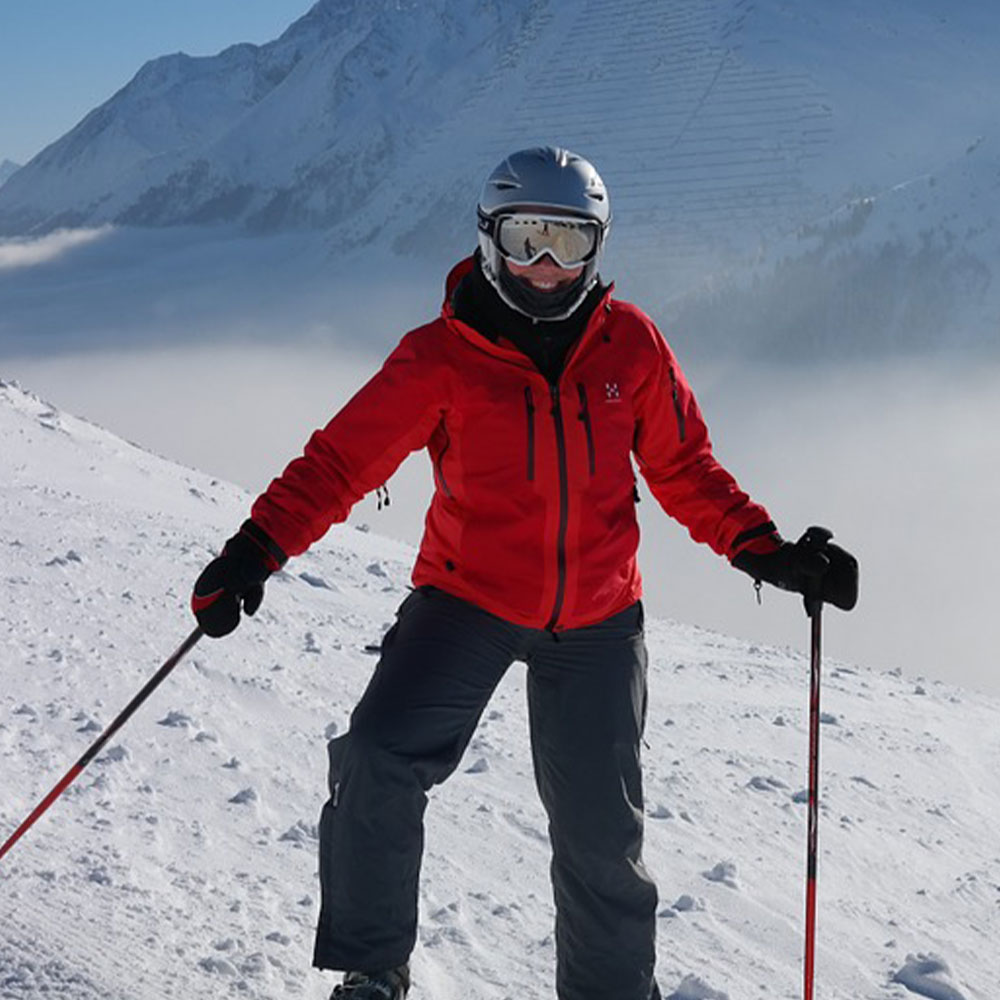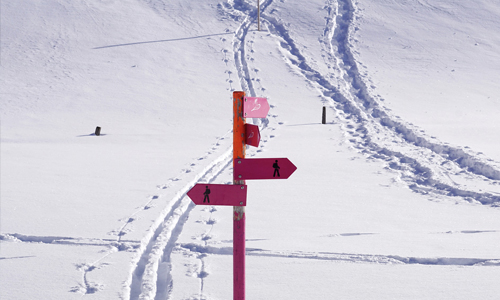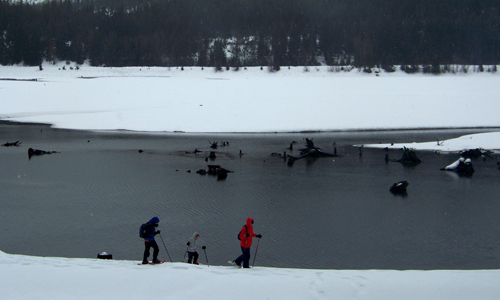Walk in the Snow like a Pro
Author

A keen runner, skier and nuts about cycling. Karl lives in Cumbria, where he loves encouraging his two children to follow in his outdoor lifestyle. Whilst out and about keeping active, Karl keeps a diary and shares it with Outdoor Look.
 Walking in the snow can be treacherous if you do not understand terrain. Slipping or falling while walking in the snow can lead to many injuries and can have a significant impact on the quality of life of the injured person. To be able to successfully walk in the snow, we have listed various tips below that will surely turn you into a snow walking expert.
Walking in the snow can be treacherous if you do not understand terrain. Slipping or falling while walking in the snow can lead to many injuries and can have a significant impact on the quality of life of the injured person. To be able to successfully walk in the snow, we have listed various tips below that will surely turn you into a snow walking expert.
Walking Upwards
Going up on the hill is not everyone’s cup of tea. There are certain techniques, that would help you to climb up the slope.
Walking in the duck style: When the slope offers you slippery inclinations, try out this technique. All you need to do is- spread out your feet outward, so that you maintain maximum contact with the surface. Next, take broad steps and kick into the slope to the inside edge of the foot for a better grip.
American Style: If you are a flat-footed traveler and struggle to walk on the steep slope you just need to go American style to go straight up. Just face the uphill, spread one foot in the outward direction like in the duck walk technique and kick with the other foot. Switch the sides when one leg gets tired walking with this technique.
Kick Steps: For winning on the short steeps in the soft snow, all you need to do is kick twice, perpendicular to the slope, creating a platform for your foot. Next, straighten your leg post each step to expand contracted muscles and lay your weight on your bones.
Walking the French style: Save the struggle and energy of your calves on the steep and hard snow with this technique. Use crossover steps and take long switchbacks to avoid tiring your uphill leg. Maintain maximum surface contact by pointing both feet slightly in the downhill direction. Lastly, bring your back foot in front of your leading foot and so on. For maximum balance, use an ice axe.
 Walking Downwards
Walking Downwards
It is easy to slip and fall when walking downwards. You should stay alert and check for loose straps, clothing and laces to avoid any accidents. The techniques listed below, would help you going downhill easily.
Take Descent Steps: To take straight down plunges in the soft snow, face outward from the slope. Force your heel into the snow facing your toes towards the sky. Continue this movement, for a soft walk in the downhill.
Jump-it Out: When the snow is firm, spread your feet in the duck style and stamp. Keep your knees flexed and your nose pointing your toes. On the steeps, take a switchback and if you feel insecure-face the slope.
Plan your Climb
Timing really matters when it comes to walking in the snow. It is easy to walk on the firm snow given that it is not rock-hard solid. You should wait for the sun to soften the ice during the winters. However, during the spring season, start your climb before the ice turns pulpy.
Gather your Traction Tools
You may require additional grip when you are planning to face the mountains. Hard snow, steep slopes and icy patches are tricky to be tackled and the traction tools can be of great use in such cases. We are suggesting a few traction tools according to different problem areas that can be a great help to you.
Chains: When you are running or moving quickly on the snowy trails or flat surfaces, chains can give you a great advantage. However, chain style traction generally lacks the bite that is required by the icy hills.
Micro spikes: When tackling the icy terrain or gentle sloped with safe fall zones- the micro spikes will come to your rescue. However, micro spikes are not meant for steep, firm terrain and do not ensure total security.
Crampons: When you are struggling to tackle the steep slopes with no-fall zones and hard snow, the crampons will save you from the hassle. Use them with mountaineering boots and an ice axe to make your walk easier.
One should always be alert when handling the snow whether it is going uphill or downhill. With the above-mentioned tricks, you can easily get through the struggle and make some of the best mountain memories.
Author

A keen runner, skier and nuts about cycling. Karl lives in Cumbria, where he loves encouraging his two children to follow in his outdoor lifestyle. Whilst out and about keeping active, Karl keeps a diary and shares it with Outdoor Look.
Categories
- Sport (28)
- Product Reviews (3)
- Team Outdoor Look (7)
- Mike Wild (2)
- Mike Payton (2)
- Suse Hammond-Pears (3)
- Snowboarding (12)
- Latest Offers (105)
- Shop Talk (1)
- Competitions (7)
- Walking (413)
- Lifestyle Fashion (8)
- Travel (86)
- Kit Guides (176)
- Workwear Clothing (6)
- Safety Workwear (4)
- Health/Fitness (289)
- Skiing (91)
- Great Outdoors (1316)
- Cycling (92)
- January 2025
- December 2024
- November 2024
- October 2024
- September 2024
- August 2024
- July 2024
- June 2024
- May 2024
- April 2024
- March 2024
- February 2024
- January 2024
- December 2023
- November 2023
- October 2023
- September 2023
- August 2023
- July 2023
- June 2023
- May 2023
- April 2023
- March 2023
- February 2023
- January 2023
- December 2022
- November 2022
- October 2022
- September 2022
- August 2022
- July 2022
- June 2022
- May 2022
- April 2022
- March 2022
- February 2022
- January 2022
- December 2021
- November 2021
- October 2021
- September 2021
- August 2021
- July 2021
- June 2021
- May 2021
- April 2021
- March 2021
- February 2021
- January 2021
- December 2020
- November 2020
- October 2020
- September 2020
- August 2020
- July 2020
- June 2020
- May 2020
- April 2020
- March 2020
- February 2020
- January 2020
- December 2019
- November 2019
- October 2019
- September 2019
- August 2019
- July 2019
- June 2019
- May 2019
- April 2019
- March 2019
- February 2019
- January 2019
- December 2018
- November 2018
- October 2018
- September 2018
- August 2018
- July 2018
- June 2018
- May 2018
- April 2018
- March 2018
- February 2018
- January 2018
- December 2017
- November 2017
- October 2017
- September 2017
- August 2017
- July 2017
- June 2017
- May 2017
- April 2017
- March 2017
- February 2017
- January 2017
- December 2016
- November 2016
- October 2016
- September 2016
- August 2016
- July 2016
- June 2016
- May 2016
- April 2016
- March 2016
- February 2016
- January 2016
- December 2015
- November 2015
- October 2015
- September 2015
- August 2015
- July 2015
- June 2015
- May 2015
- April 2015
- March 2015
- February 2015
- January 2015
- December 2014
- November 2014
- October 2014
- September 2014
- August 2014
- July 2014
- June 2014
- May 2014
- April 2014
- March 2014
- February 2014
- January 2014
- December 2013
- November 2013
- October 2013
- September 2013
- August 2013
- July 2013
- June 2013
- May 2013
- April 2013
- March 2013
- February 2013
- January 2013
- December 2012
- November 2012
- October 2012
- September 2012
- August 2012
- July 2012
- June 2012
- May 2012
- April 2012
- March 2012
- February 2012
- January 2012
- December 2011
- November 2011
- October 2011
- September 2011
- August 2011
- May 2010
- April 2010
- March 2010
- February 2010
- January 2010
- November 2009
- October 2009
- September 2009
Submit a Comment